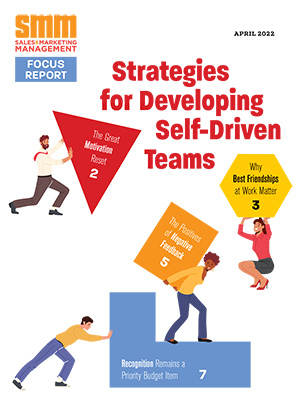By LIEF LARSON
For the last decade and a half, the focus of online business has been to take people out of the sales process. While this model works well for many types of low-involvement and frequently purchased items (books, consumer gadgets, toys, printer toner, shoes), it fails for complex, online-to-offline transactions in which product and sales professionals are still essential to the sales process.
Social networks and online chat tools inject people into the sales process – but generally in the wrong manner and at the wrong time. What’s needed is a blending of existing technology and slightly modified marketing and sales processes that enable companies to put their best people forward, in a comfortable and interactive fashion, whenever and wherever buyers are looking for information. Companies that embrace this change will be rewarded with higher customer satisfaction, more leads and shorter sales cycles.
Since the dawn of commerce, it’s been true that “people buy from people.” But the adoption of e-commerce over the past 15 years has narrowed the range of transactions requiring human interaction. Automated e-commerce has improved convenience and lowered costs for many types of commonly purchased goods.
In the traditional sales process, the buyer and seller engage in face-to-face interaction; an example is when you enter a retail store and a sales assistant asks if you have a question or need information about the sweater or tablet device you are eyeballing. You can evaluate his or her product knowledge. You can decide to trust him or her – or not.
One thing the salesperson doesn’t initially ask for is for contact information. Doing so might send you right out the door since there’s a chance you’re in the early stages of your deliberations and prefer to remain anonymous.
American consumers bought about $200 billion in products and services over the Web last year, according to Forrester Research. Pure online sales were just 4.7 percent of total retail sales in 2005. Forrester expects that figure to double by 2015. The same report concludes that a large proportion of offline sales were influenced by online research. It estimates that online and “Web-influenced” offline sales combined accounted for 42 percent of total retail sales, a percentage that likely will grow to 53 percent by 2014.
Consumers have embraced e-commerce because it makes it simple and convenient to buy frequently purchased, commodity products. But after years of experience, we all know it is frustrating when contacting companies online. It’s almost impossible to find a person who represents the company from a sales or service perspective. There’s an 800 number that leads to a voicemail jail, and likely an info@company.com e-mail address that goes to who knows where. A few sites offer online text chat, but the prospective customer knows nothing about the person on the other end and what kind of product knowledge he or she has.
While companies have responded with massive amounts of online content to enable the buying process, there’s little ability for personal engagement early on – just lead forms. Many prospects are reluctant to give up their information for fear of being pounced upon by sales reps and receiving endless promotions. Marketing automation software is designed to send out an automated series of email messages based entirely on a prospective customer’s online behavior, which involves no human involvement
Customers are willing to forego human contact (and may not even want it) in exchange for the selection, price, and convenience of buying online. But it’s a different situation when purchasing expensive and infrequently purchased products and services, which are more common in the business-to-business space. These are often “online to offline” (O2O) transactions in which the initial research is conducted on the Web but the actual purchase takes place in the real world.
Here, the shortcomings of the “humanless” Internet are revealed. Many companies employ talented salespeople and product experts but hide them behind the wall of automation the Internet places between buyers and sellers.
Problem is, these are the people who need to be connecting with potential customers in the early stages of their purchasing deliberations. This is when buyers have the most questions. This is when they are looking for someone they can talk to and trust. If that personal touch and trust can be established when buyers need it the most, the odds of converting prospects to buyers greatly increases.
Put Your Best People Forward
To fully capture the potential of O2O sales, companies need to digitally empower their sales force to become trust agents that engage buyers one-to-one online and then take the relationship offline. The question is how? Here are some suggestions.
Make your best people findable. Search engines are designed to find websites, not people. To establish a presence for your best people available anywhere a search might take a potential buyer, what’s needed is a rich portable directory of real live human beings in your company that provide personal and professional details and real time engagement opportunities — that allow customers to initiate engagements on their own terms.
Rich means more than just photos and contact information. It means using available technology to present the personality, experiences and knowledge of salespeople. Portable means embedding such rich directories in places other than just corporate websites, since buyers search for information and evaluate alternates in many different places. Expose your best people anywhere buyers go, from social media sites to business directories to blogs and forums, giving them the broadest digital footprint possible.
Build trust. Use technology to bring the personality and personal selling skills of the agent directly to consumers in a way that inspires confidence and invites interaction. Enable a prospective buyer to search for the right person to contact and get questions answered before giving up anonymity.
Enhance engagement. Engagement means using a combination of text chat, audio and/or video that allows for real-time one-to-one communication between buyers and self-selected trusted sales agents when buyers have the greatest need for information. This essentially brings the retail sales associate interaction experience online.
Today, 70 percent of consumers conduct their pre-purchase due diligence online and then validate their findings offline, both through the touch and feel of physical products and by confirming their conclusions with live sales agents.
For high-value, infrequently purchased products and services, closing a sale usually takes place offline. Companies that utilize web technology to put their best people forward and facilitate online-to-offline transactions will close more sales faster than those who continue to maintain virtual walls around their organizations.
This approach to Web technology puts a more “human face” on a company. Rather than traditional brand building, it’s about exposing the humans behind the brand by encouraging engagement earlier in the sales process.
Brands, after all, are holding vessels. It’s the customer experience – the quality and value of their interactions with the humans in your company – that really gives a brand meaning and turns prospects into sales.
Lief Larson is President and Product Director of Workface, Inc., a technology company that helps businesses market their products and services by promoting their employees’ expertise and helping their staff engage with prospects online and in real time.


